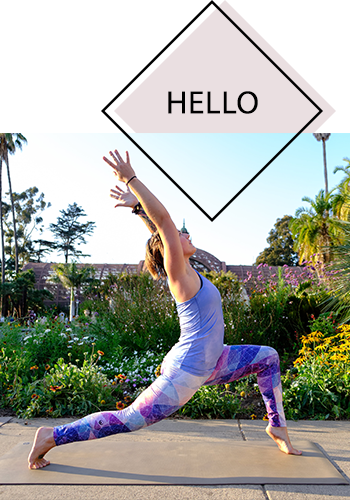Mantra
/Even if things feel uneasy, I will stay grateful.
What is your mantra for this week?
Photo by Felipe Silva of Uprise Collective.

Are you following along in the Badass Yoga Teachers series here on Alive in the Fire? :) I hope you're enjoying the posts and finding them useful!

I've been digging through my archives and realized I have quite a few posts on topics relevant to yoga teachers and wanted to share, in case you missed any of these:
5 books you may not have read in your yoga teacher training.
Advice from real-life yoga teachers on how to sequence a class.
How to hold space for your students.
Reflections on humility as a teacher.
3 simple things to focus on as you grow your teaching schedule.
Being receptive to the moment as you teach.
As always, please feel free to email me any time, too! (aliveinthefire at gmail dot com)
Much love.
Calling all yoga teachers! This yoga script and series of Savasana meditations is designed to help empower you and take your teaching to the next level. This 45-page workbook includes:
A full script for a grounding power Vinyasa class including poses for:
Integration/ warm up
Sun Salutations
Warrior Series with Balancing and Grounding Poses
Standing Balancing poses
Backbends
Twists and Forward Folds
Savasana cues
8 Savasana Meditation Scripts you can read to your students
Creative ways to start and end yoga classes
How to prepare yourself and reduce nerves before class
Exactly what to say when you begin teaching - what to remind students of and how to begin class
Ideas for beginning class with movement, meditation, breathing or a theme
How to end a yoga class smoothly and transition students out of Savasana
How to modify the sequence for a 60 minute time frame (as opposed to 75 or 90 minutes)
Here’s what yoga teachers are saying about the GROUNDING POWER YOGA SCRIPT:
“I used to struggle with figuring out what to say while students were in Savasana at the end of class. It just felt awkward and I wasn’t sure if I should stay quiet or guide them. Now I just read one of the meditations. Now students come up to me after class and say how they loved it!” -Leslie, Vinyasa yoga teacher
”After my yoga teacher training, I was actually still confused about how to sequence a class. I felt really scattered. This script helped me feel prepared and gave me a good structure and framework. Super helpful!” -Christina, power flow yoga teacher
“This script helped me get rid of so much stress around teaching. Thank you.” -Sam, power vinyasa teacher
Explore the best fitness activities to enhance both your body and mind, including yoga, cold water swimming, walking, running, and strength training.
Alive in the Fire is a blog inspired by practicing yoga mindfully, teaching from the heart, giving hugs, and living a badass life.

Alive in the Fire is a blog inspired by practicing yoga mindfully, teaching from the heart, giving hugs, and living a badass life.
Donations help keep the programs and yoga classes at Alive in the Fire available to those in need. Your generosity is greatly appreciated!

Copyright 2017. All rights reserved - Alive in the Fire. Design by Hello Big Idea.
This post is for all the new yoga teachers out there.